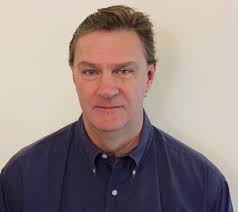Share
As Gov. Gavin Newsom signed a package of climate bills that supercharge the rush to renewable energy, much of Europe was preparing for a winter shivering in the dark. Why does California think that the problems created by a reckless commitment to green energy elsewhere will bypass this state?
Like primitive man who could not protect himself from his surroundings, German officials are hoping for “a bit of luck with the weather.” Planning started over the summer, when the government instituted a set of energy-saving rules, which include telling businesses they can’t keep the lights on at night, prioritizing coal and oil cargo shipments over passenger travel on railways, and possibly banning the heating of private pools.
Though fall has just arrived, the long night has already descended on the country. In Berlin’s historic Unter den Linden boulevard, Foreign Policy reports, “iconic monuments and structures … of Frederick the Great, Humboldt University, the German Historical Museum, and the Brandenburg Gate” and others “are conspicuously dark.” Across the rest of the country, the lighting for public monuments, city halls, state administration buildings, libraries, and museums has to be turned off by 10 p.m. Other European countries have adopted similar policies.

Kerry Jackson
Opinion
Germany has also limited thermostats in public buildings to 66 degrees. Hallways, entrances, and foyers cannot be heated at all. Public employees can wash their hands with cold water only.
“We’re going to have to bundle up,” says Humboldt University President Julia von Blumenthal.
Meanwhile, the Swiss have been told to stock up on candles should the lights go out, and Spain has both air conditioning and heating restrictions in public and private buildings.
Across the English Channel, energy prices are soaring in the United Kingdom, and Irish economist Philip Pilkington is predicting the lights will go off this winter in Britain. The British have become reliant on energy imports from countries – some of which are expecting their own energy troubles and won’t have excess power to sell – in part due to their abandonment of fossil fuels. Officials have responded to the anticipated crisis by drawing up plans to keep the power on. Oilprice.com reports that “under its ‘reasonable worst-case scenario,’” the U.K. should prepare for “exceptionally cold weather, necessitating energy conservation measures that will include organized blackouts across four days this coming January.”
Part of the blame for an almost-certain cold, grim winter can be laid on Russian President Vladimir Putin, who has cut off natural gas supplies to the European Union. In past years, Russia provided about 40% the EU’s gas, so it’s a significant decrease.
But domestic policies are to blame, as well. Germany, by far Europe’s largest customer of Russian gas, has left itself vulnerable as it phases out nuclear and fossil fuels. There’s simply not enough energy produced by renewables, which account for less than 40% of the country’s power, to replace the lost Russian gas.
In what’s both a rational and desperate move, Germany has decided to keep two nuclear plants “on a kind of backup status, available only if the country has no other option,” says CNBC. The government has also reactivated coal- and oil-fired generation plants.
It all sounds a lot like California, which has extended the lives of the last atomic energy facility in the state, the Diablo Canyon Nuclear Power Plant in San Luis Obispo County, scheduled to close in 2025, as well as four gas plants that were in line to be shuttered. The decisions to keep these power plants running are a tacit admission that reaching an all-renewables electricity grid by 2045 is unrealistic.
But those are just a few good decisions in a sea of many poor ones that are pushing California to the energy edge – an uncertain place where one week after the Air Resources Board adopted Newsom’s order that starting in 2035 no new cars can be sold in the state unless they’re “zero-emissions” vehicles, the Independent System Operator told those who already own EVs to avoid charging them during peak afternoon and evening hours. The risk of breaking the grid was too high. This happened even though there are only 1.13 million plug-in EVs in the state, far from the more than 14 million that are expected to be on the roads, and in the charging docks, in 2035.
Though it’s painful to say it, the gloomy days in California have only just begun.
About the Author
Kerry Jackson is a fellow with the Center for California Reform at the Pacific Research Institute.
RELATED TOPICS:
Categories

One Gaza Girl’s Fight to Survive Extreme Hunger


















